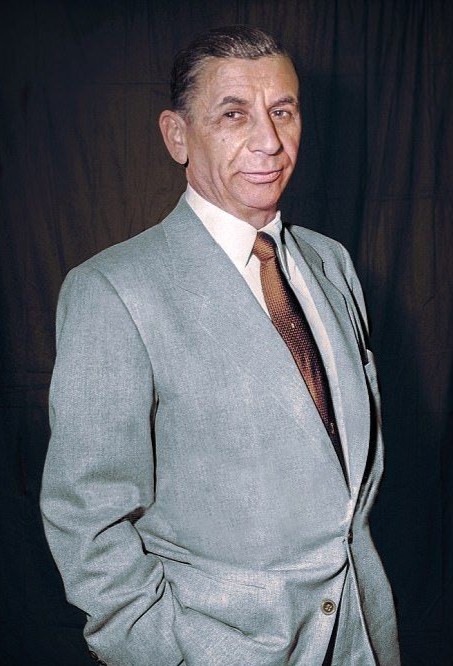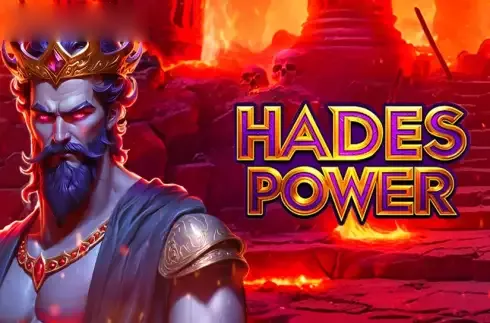
All
September 16, 2024
How the Mafia Built Las Vegas: The Untold Story of Organized Crime and Casinos

All
September 16, 2024
How the Mafia Built Las Vegas: The Untold Story of Organized Crime and Casinos
Discover how the mafia shaped the history of Las Vegas, building a casino empire through organized crime. Learn about the mob’s influence on gambling, the rise of mob-run casinos, and how their legacy lives on.
How the Mafia Built Las Vegas: The Untold Story of Organized Crime and Casinos
Las Vegas is the world’s gambling capital, but its luxurious casinos hide a dark history. The mafia played a crucial role in the creation of the Las Vegas Strip, transforming the city from a dusty desert town into the glamorous casino hub it is today. This blog uncovers how organized crime used casinos to launder money, build empires, and shape the modern gambling industry.
The Mafia and Casinos: A Powerhouse Partnership
In the early 20th century, gambling was illegal in most parts of the United States, but that didn’t stop people from placing bets. Mafia families saw an opportunity in the underground gambling scene, running illegal casinos and betting rings in cities like New York, Chicago, and New Orleans. When Nevada legalized gambling in 1931, mobsters saw the perfect chance to move their operations into the open, turning Las Vegas into their gambling headquarters.

The Birth of the Mob-Controlled Las Vegas Casinos
By the 1940s, the mafia had begun investing in the construction of casinos in Las Vegas. Figures like Bugsy Siegel and Meyer Lansky were instrumental in building iconic resorts, such as the Flamingo, which became a blueprint for the high-end casinos that followed. These casinos weren’t just designed for gambling—they offered entertainment, fine dining, and luxury, attracting tourists from across the country.

How the Mafia Used Casinos to Launder Money
One of the most significant advantages for the mafia in owning casinos was the ability to launder money. Known as "the skim," mobsters would take a portion of the casino's profits before reporting earnings to the government, allowing them to hide vast sums of illegal money. This method helped the mafia funnel millions of dollars back into their criminal enterprises, expanding their influence in both legal and illegal gambling.
The Golden Age of Mafia-Run Casinos in Las Vegas
Throughout the 1950s and 1960s, Las Vegas flourished under mafia control. The Las Vegas Strip became a bustling center of gambling, nightlife, and world-class entertainment. Celebrities like Frank Sinatra and Dean Martin regularly performed at mob-controlled casinos, helping to build Las Vegas's reputation as a glamorous destination for gamblers and high-rollers.

The Fall of the Mafia in the Casino Industry
By the 1970s, the U.S. government began taking aggressive steps to dismantle organized crime’s hold on Las Vegas. The RICO Act (Racketeer Influenced and Corrupt Organizations Act) was passed in 1970, giving federal authorities the ability to target and prosecute mafia families as criminal organizations. This, combined with increasing FBI investigations, led to the downfall of mafia-run casinos.
As corporate entities began buying up casinos, the mafia’s influence in Las Vegas dwindled. By the 1980s, the era of mob-controlled casinos was over, replaced by corporate giants that now dominate the casino industry.
The Mafia’s Lasting Legacy in Modern Casinos
While the mafia no longer runs the casinos, their legacy is still deeply embedded in the Las Vegas experience. The high-roller treatment, luxurious casino design, and focus on elite customer service were all strategies pioneered by the mob. Modern casinos continue to use these methods to attract gamblers, offering VIP experiences, exclusive suites, and high-stakes tables to wealthy players.
The mafia’s connection to gambling has also left a lasting mark on pop culture. Movies like Casino and The Godfather have romanticized the image of the mobster gambler, immortalizing the role the mafia played in shaping Las Vegas’s history.
Conclusion: How the Mafia Built the Casino Empire
The mafia’s involvement in the creation of Las Vegas’s casinos is one of the most fascinating chapters in American history. From running illegal gambling rings to building luxury resorts on the Las Vegas Strip, the mob’s influence is undeniable. Although the mafia no longer controls casinos, their strategies and vision have left a lasting impact on the modern gambling industry, shaping Las Vegas into the gambling mecca it is today.
Join The Family: Use Code "GENCO" at Vavada Casino!
Ready to play like a true boss? The casino world is all about power, money, and making the right moves. Register at Vavada Casino using code GENCO and unlock exclusive bonuses reserved for those in the inner circle. Don’t wait—make your move, and click here to get in the game. In our world, loyalty always pays.
How the Mafia Built Las Vegas: The Untold Story of Organized Crime and Casinos
Las Vegas is the world’s gambling capital, but its luxurious casinos hide a dark history. The mafia played a crucial role in the creation of the Las Vegas Strip, transforming the city from a dusty desert town into the glamorous casino hub it is today. This blog uncovers how organized crime used casinos to launder money, build empires, and shape the modern gambling industry.
The Mafia and Casinos: A Powerhouse Partnership
In the early 20th century, gambling was illegal in most parts of the United States, but that didn’t stop people from placing bets. Mafia families saw an opportunity in the underground gambling scene, running illegal casinos and betting rings in cities like New York, Chicago, and New Orleans. When Nevada legalized gambling in 1931, mobsters saw the perfect chance to move their operations into the open, turning Las Vegas into their gambling headquarters.

The Birth of the Mob-Controlled Las Vegas Casinos
By the 1940s, the mafia had begun investing in the construction of casinos in Las Vegas. Figures like Bugsy Siegel and Meyer Lansky were instrumental in building iconic resorts, such as the Flamingo, which became a blueprint for the high-end casinos that followed. These casinos weren’t just designed for gambling—they offered entertainment, fine dining, and luxury, attracting tourists from across the country.

How the Mafia Used Casinos to Launder Money
One of the most significant advantages for the mafia in owning casinos was the ability to launder money. Known as "the skim," mobsters would take a portion of the casino's profits before reporting earnings to the government, allowing them to hide vast sums of illegal money. This method helped the mafia funnel millions of dollars back into their criminal enterprises, expanding their influence in both legal and illegal gambling.
The Golden Age of Mafia-Run Casinos in Las Vegas
Throughout the 1950s and 1960s, Las Vegas flourished under mafia control. The Las Vegas Strip became a bustling center of gambling, nightlife, and world-class entertainment. Celebrities like Frank Sinatra and Dean Martin regularly performed at mob-controlled casinos, helping to build Las Vegas's reputation as a glamorous destination for gamblers and high-rollers.

The Fall of the Mafia in the Casino Industry
By the 1970s, the U.S. government began taking aggressive steps to dismantle organized crime’s hold on Las Vegas. The RICO Act (Racketeer Influenced and Corrupt Organizations Act) was passed in 1970, giving federal authorities the ability to target and prosecute mafia families as criminal organizations. This, combined with increasing FBI investigations, led to the downfall of mafia-run casinos.
As corporate entities began buying up casinos, the mafia’s influence in Las Vegas dwindled. By the 1980s, the era of mob-controlled casinos was over, replaced by corporate giants that now dominate the casino industry.
The Mafia’s Lasting Legacy in Modern Casinos
While the mafia no longer runs the casinos, their legacy is still deeply embedded in the Las Vegas experience. The high-roller treatment, luxurious casino design, and focus on elite customer service were all strategies pioneered by the mob. Modern casinos continue to use these methods to attract gamblers, offering VIP experiences, exclusive suites, and high-stakes tables to wealthy players.
The mafia’s connection to gambling has also left a lasting mark on pop culture. Movies like Casino and The Godfather have romanticized the image of the mobster gambler, immortalizing the role the mafia played in shaping Las Vegas’s history.
Conclusion: How the Mafia Built the Casino Empire
The mafia’s involvement in the creation of Las Vegas’s casinos is one of the most fascinating chapters in American history. From running illegal gambling rings to building luxury resorts on the Las Vegas Strip, the mob’s influence is undeniable. Although the mafia no longer controls casinos, their strategies and vision have left a lasting impact on the modern gambling industry, shaping Las Vegas into the gambling mecca it is today.
Join The Family: Use Code "GENCO" at Vavada Casino!
Ready to play like a true boss? The casino world is all about power, money, and making the right moves. Register at Vavada Casino using code GENCO and unlock exclusive bonuses reserved for those in the inner circle. Don’t wait—make your move, and click here to get in the game. In our world, loyalty always pays.




Discover how the mafia shaped the history of Las Vegas, building a casino empire through organized crime. Learn about the mob’s influence on gambling, the rise of mob-run casinos, and how their legacy lives on.
How the Mafia Built Las Vegas: The Untold Story of Organized Crime and Casinos
Las Vegas is the world’s gambling capital, but its luxurious casinos hide a dark history. The mafia played a crucial role in the creation of the Las Vegas Strip, transforming the city from a dusty desert town into the glamorous casino hub it is today. This blog uncovers how organized crime used casinos to launder money, build empires, and shape the modern gambling industry.
The Mafia and Casinos: A Powerhouse Partnership
In the early 20th century, gambling was illegal in most parts of the United States, but that didn’t stop people from placing bets. Mafia families saw an opportunity in the underground gambling scene, running illegal casinos and betting rings in cities like New York, Chicago, and New Orleans. When Nevada legalized gambling in 1931, mobsters saw the perfect chance to move their operations into the open, turning Las Vegas into their gambling headquarters.

The Birth of the Mob-Controlled Las Vegas Casinos
By the 1940s, the mafia had begun investing in the construction of casinos in Las Vegas. Figures like Bugsy Siegel and Meyer Lansky were instrumental in building iconic resorts, such as the Flamingo, which became a blueprint for the high-end casinos that followed. These casinos weren’t just designed for gambling—they offered entertainment, fine dining, and luxury, attracting tourists from across the country.

How the Mafia Used Casinos to Launder Money
One of the most significant advantages for the mafia in owning casinos was the ability to launder money. Known as "the skim," mobsters would take a portion of the casino's profits before reporting earnings to the government, allowing them to hide vast sums of illegal money. This method helped the mafia funnel millions of dollars back into their criminal enterprises, expanding their influence in both legal and illegal gambling.
The Golden Age of Mafia-Run Casinos in Las Vegas
Throughout the 1950s and 1960s, Las Vegas flourished under mafia control. The Las Vegas Strip became a bustling center of gambling, nightlife, and world-class entertainment. Celebrities like Frank Sinatra and Dean Martin regularly performed at mob-controlled casinos, helping to build Las Vegas's reputation as a glamorous destination for gamblers and high-rollers.

The Fall of the Mafia in the Casino Industry
By the 1970s, the U.S. government began taking aggressive steps to dismantle organized crime’s hold on Las Vegas. The RICO Act (Racketeer Influenced and Corrupt Organizations Act) was passed in 1970, giving federal authorities the ability to target and prosecute mafia families as criminal organizations. This, combined with increasing FBI investigations, led to the downfall of mafia-run casinos.
As corporate entities began buying up casinos, the mafia’s influence in Las Vegas dwindled. By the 1980s, the era of mob-controlled casinos was over, replaced by corporate giants that now dominate the casino industry.
The Mafia’s Lasting Legacy in Modern Casinos
While the mafia no longer runs the casinos, their legacy is still deeply embedded in the Las Vegas experience. The high-roller treatment, luxurious casino design, and focus on elite customer service were all strategies pioneered by the mob. Modern casinos continue to use these methods to attract gamblers, offering VIP experiences, exclusive suites, and high-stakes tables to wealthy players.
The mafia’s connection to gambling has also left a lasting mark on pop culture. Movies like Casino and The Godfather have romanticized the image of the mobster gambler, immortalizing the role the mafia played in shaping Las Vegas’s history.
Conclusion: How the Mafia Built the Casino Empire
The mafia’s involvement in the creation of Las Vegas’s casinos is one of the most fascinating chapters in American history. From running illegal gambling rings to building luxury resorts on the Las Vegas Strip, the mob’s influence is undeniable. Although the mafia no longer controls casinos, their strategies and vision have left a lasting impact on the modern gambling industry, shaping Las Vegas into the gambling mecca it is today.
Join The Family: Use Code "GENCO" at Vavada Casino!
Ready to play like a true boss? The casino world is all about power, money, and making the right moves. Register at Vavada Casino using code GENCO and unlock exclusive bonuses reserved for those in the inner circle. Don’t wait—make your move, and click here to get in the game. In our world, loyalty always pays.




Other Blogs
Other Blogs
Check our other project Blogs with useful insight and information for your businesses
Other Blogs
Other Blogs
Check our other project Blogs with useful insight and information for your businesses
Other Blogs
Other Blogs
Check our other project Blogs with useful insight and information for your businesses


